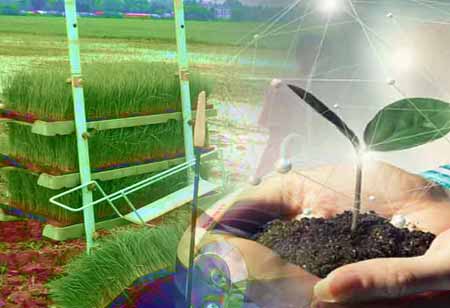By
Agri Business Review | Monday, February 14, 2022
Stay ahead of the industry with exclusive feature stories on the top companies, expert insights and the latest news delivered straight to your inbox. Subscribe today.
The demand is increasing explicitly with the increase in population. It can meet the demand with the support of IoT.
Fremont, CA: The increasing population is one of the greater challenges. The global population is awaited to hit 9.6 billion by 2050, which resembles a big problem for the agriculture industry. Competing with other challenges, such as extreme weather conditions, farming's environmental effect, and the rising weather conditions, the necessity for more food has to be met. Agriculture has to embrace new technology to meet these demands. IoT technology-based smart farming will allow growers and farmers to reduce waste and better productivity by optimizing fertilizer use to enlarge the efficiency of farm vehicles' routes.
A capital-intensive and hi-tech system, Smart farming allows growing food cleanly and sustainably for the people. In IoT-based smart farming, the system is created for monitoring the crop field with the help of sensors and automated irrigation systems. It is highly advanced and related to the conventional approach. IoT-based smart farming can provide huge benefits to environmental issues, including efficient water usage or optimizing inputs and treatments.
IoT in Farming
Precision Farming is the method that makes farming practice more controlled and accurate concerning raising livestock and growing crops. In this approach to farm management, the principal thing is to use IT and other items like automated hardware, autonomous vehicles sensors, robotics, control systems, variable technology, and many more. In addition, the corporation of access to high-speed internet, mobile devices, and reliable, low-cost satellites by the manufacturers are a few technologies depicting the precision agriculture trend.
Drones- Technology has been developing every passing day, and drones are one such example. Currently, agriculture is one of the vital industries to incorporate drones. Drones are primarily used to develop various agricultural practices. Ground-based and aerial-based drones are being used in the agricultural industry, such as for crop health assessment, crop monitoring, irrigation, crop spraying, planting, and soil and field analysis.
The benefits of drones include:
●Crop health imaging.
●Ease of use.
●Integrated GIS mapping.
●Saving time.
●The potential to increase the flow.
Livestock Monitoring- Huge farm owners can use wireless IoT applications to gather data regarding their cattle's location, well-being, and health. It helps them assess the sick animals and separate them from the herd, preventing the spread of diseases. Incorporation of IoT also saves labor costs, as ranchers can locate their cattle with the help of IoT sensors.






